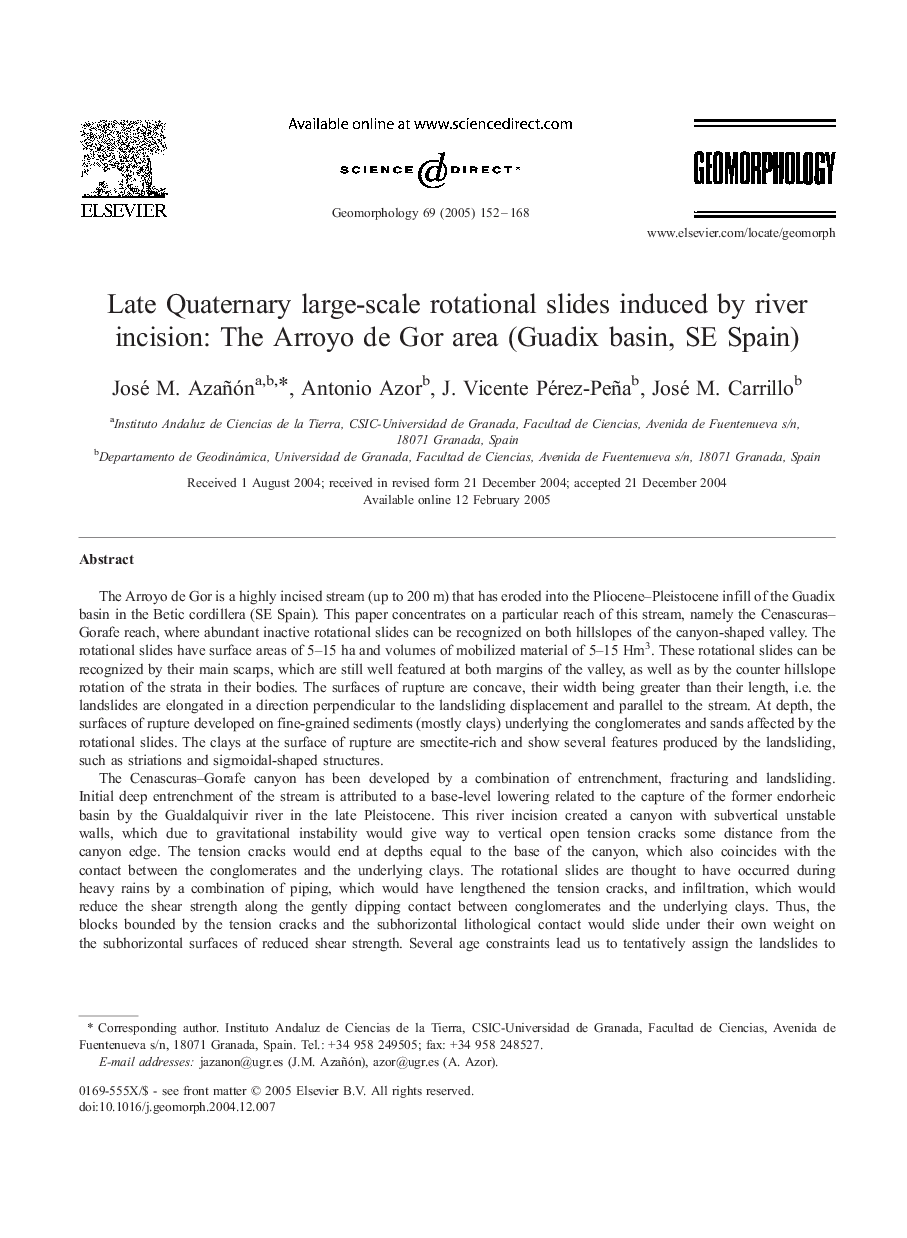| Article ID | Journal | Published Year | Pages | File Type |
|---|---|---|---|---|
| 9524906 | Geomorphology | 2005 | 17 Pages |
Abstract
The Cenascuras-Gorafe canyon has been developed by a combination of entrenchment, fracturing and landsliding. Initial deep entrenchment of the stream is attributed to a base-level lowering related to the capture of the former endorheic basin by the Gualdalquivir river in the late Pleistocene. This river incision created a canyon with subvertical unstable walls, which due to gravitational instability would give way to vertical open tension cracks some distance from the canyon edge. The tension cracks would end at depths equal to the base of the canyon, which also coincides with the contact between the conglomerates and the underlying clays. The rotational slides are thought to have occurred during heavy rains by a combination of piping, which would have lengthened the tension cracks, and infiltration, which would reduce the shear strength along the gently dipping contact between conglomerates and the underlying clays. Thus, the blocks bounded by the tension cracks and the subhorizontal lithological contact would slide under their own weight on the subhorizontal surfaces of reduced shear strength. Several age constraints lead us to tentatively assign the landslides to the Isotope stage 5 (around 32 ka), an interglacial period agreed to be wetter and slightly warmer than the present-day semi-arid climate.
Related Topics
Physical Sciences and Engineering
Earth and Planetary Sciences
Earth-Surface Processes
Authors
José M. Azañón, Antonio Azor, J. Vicente Pérez-Peña, José M. Carrillo,
